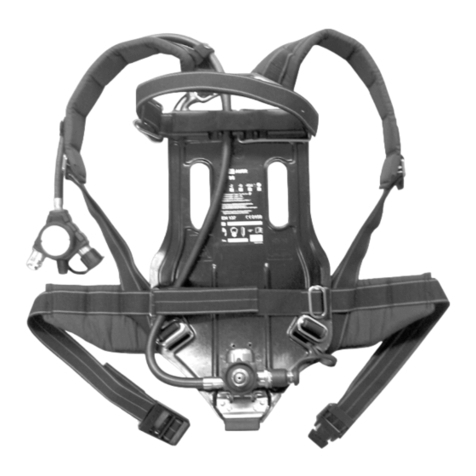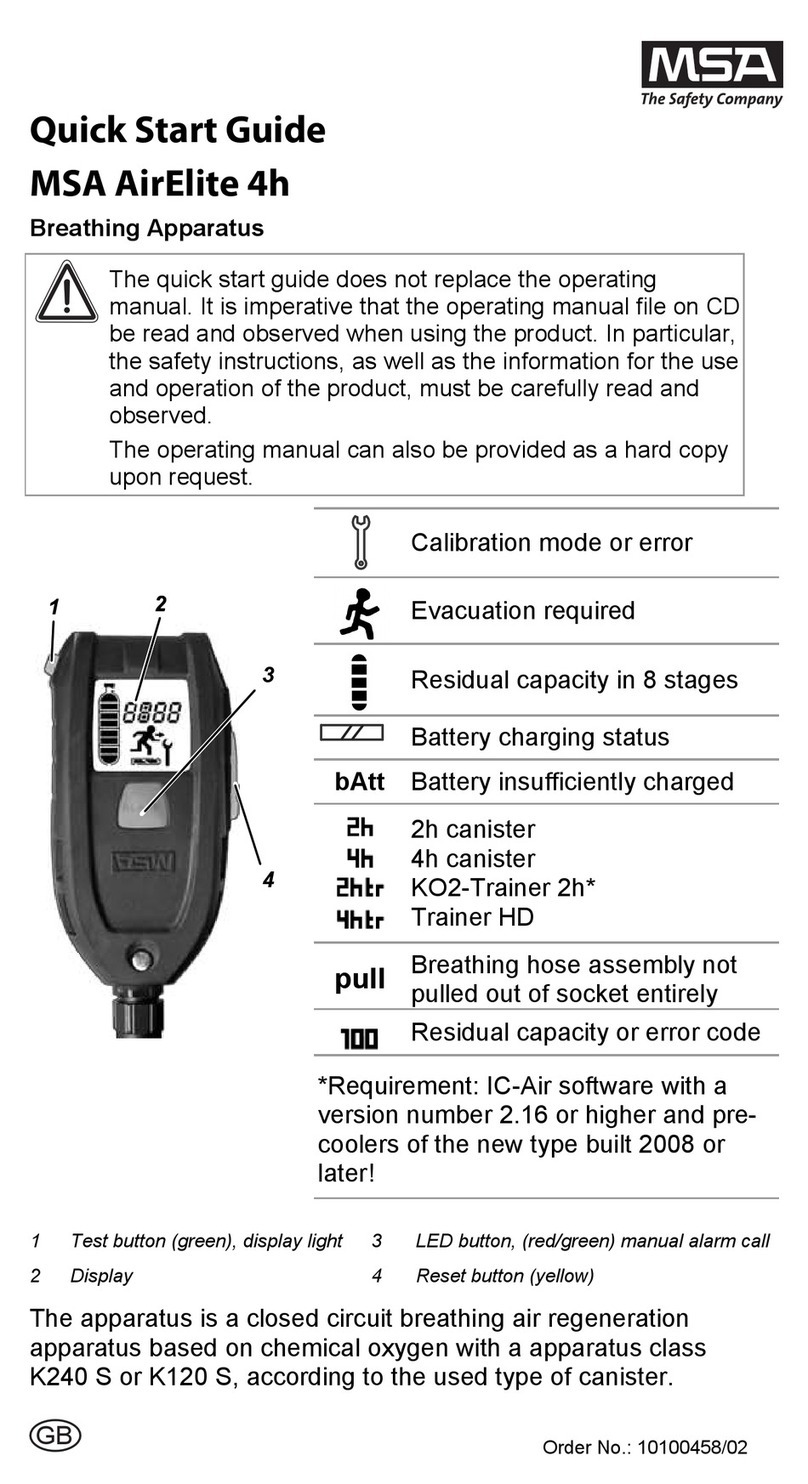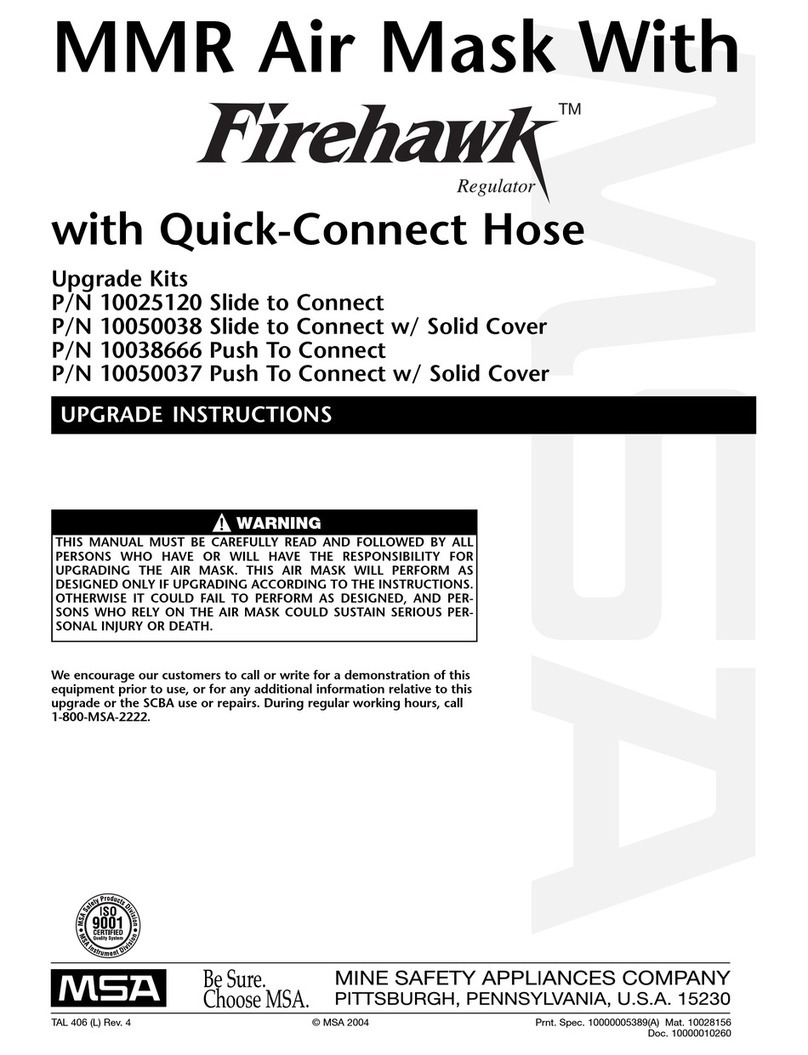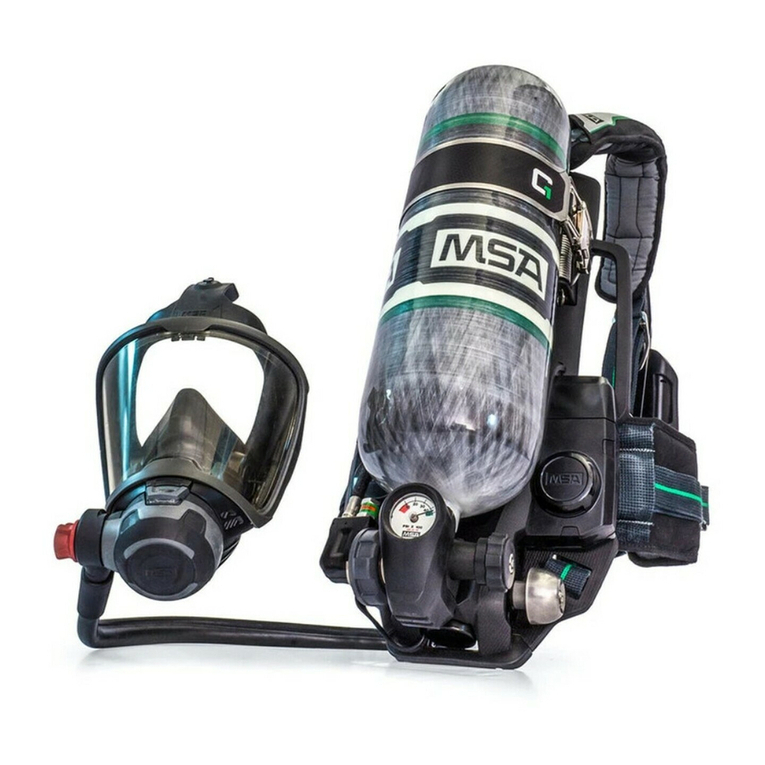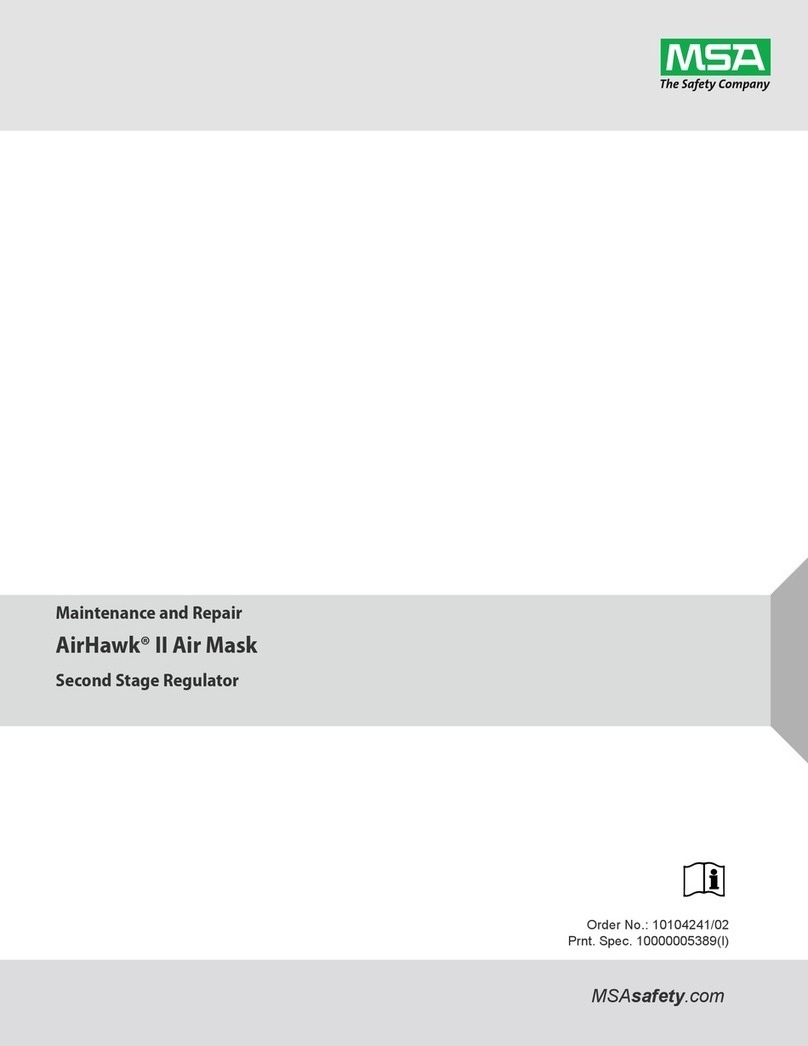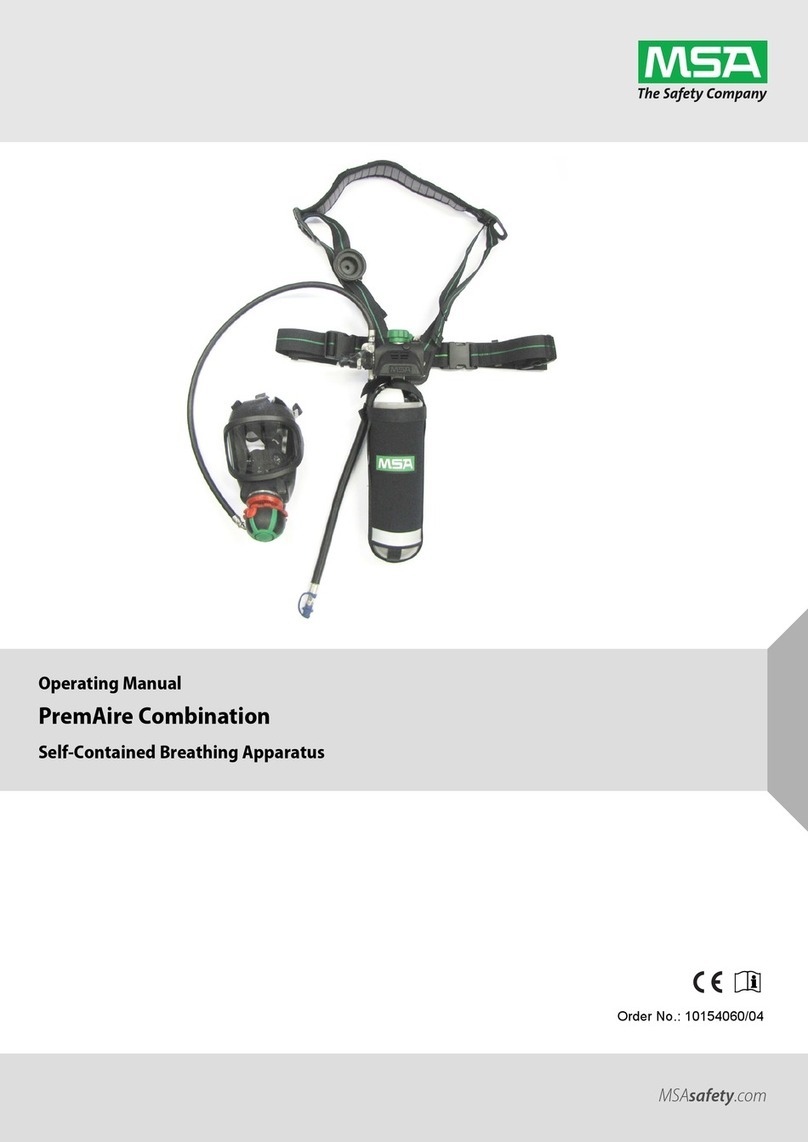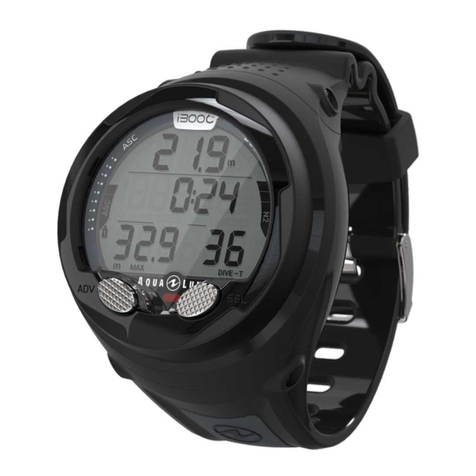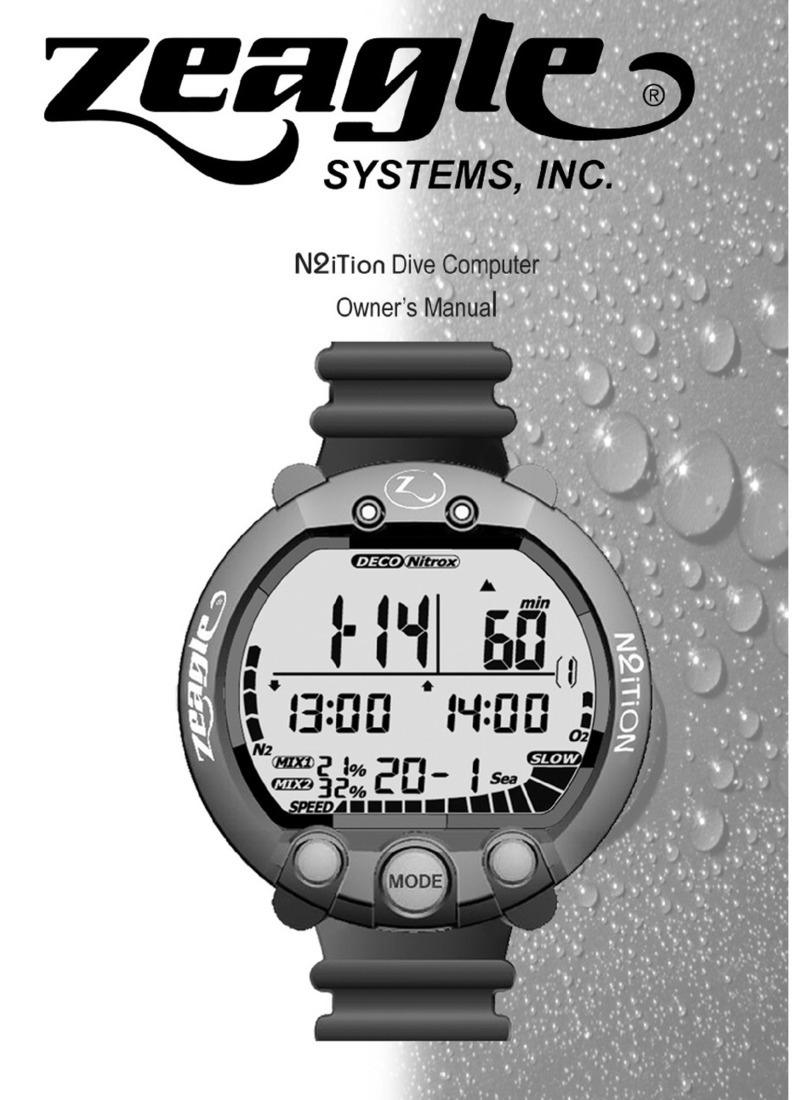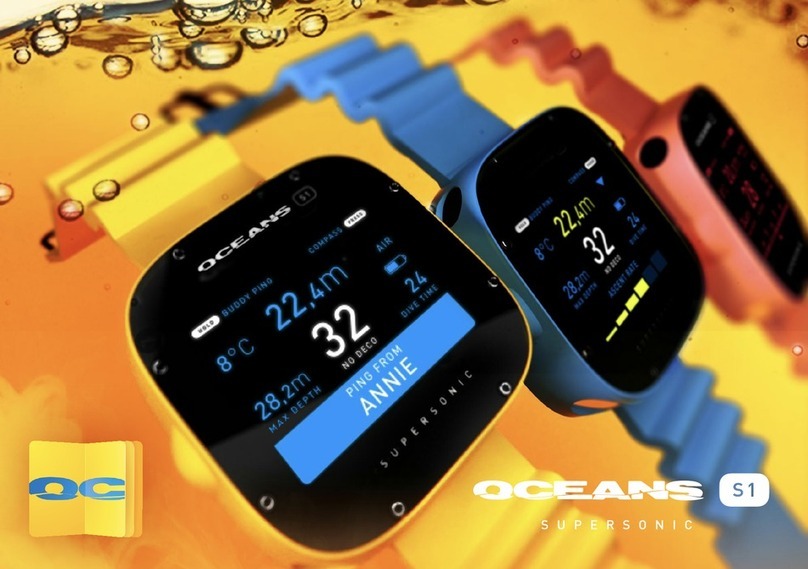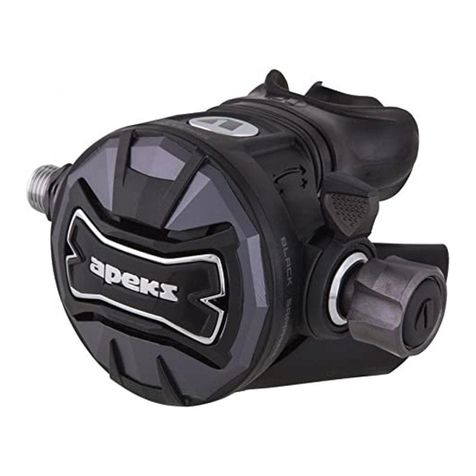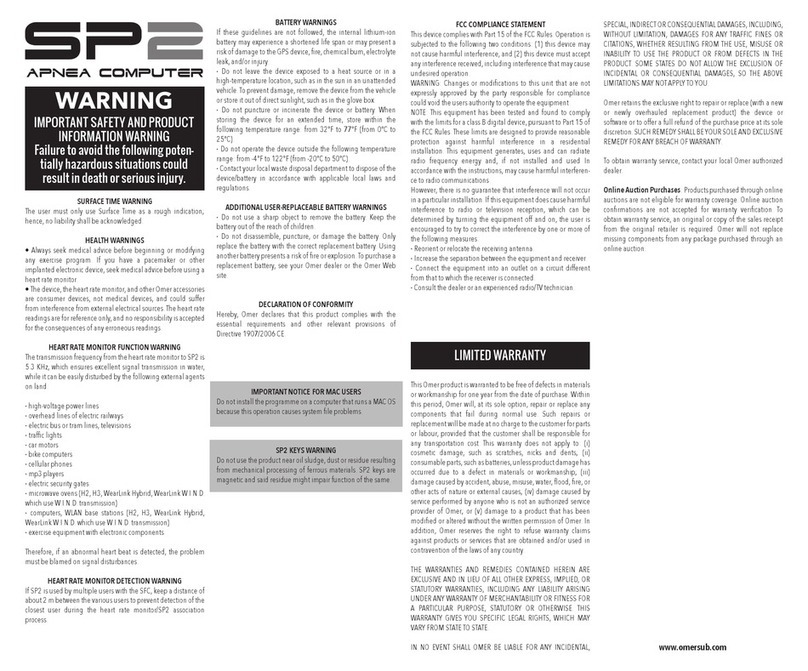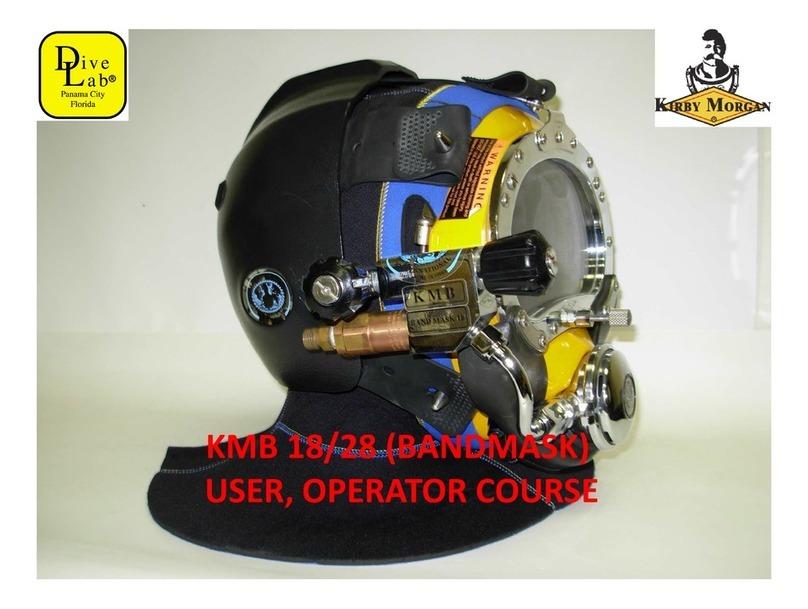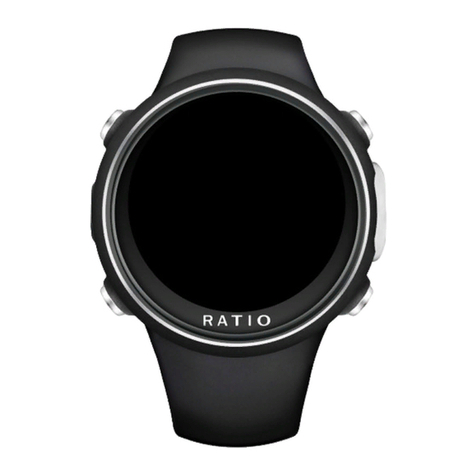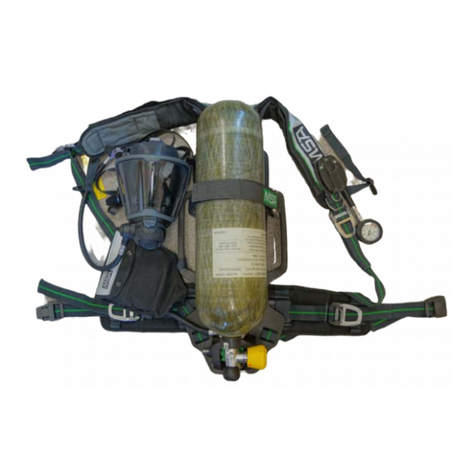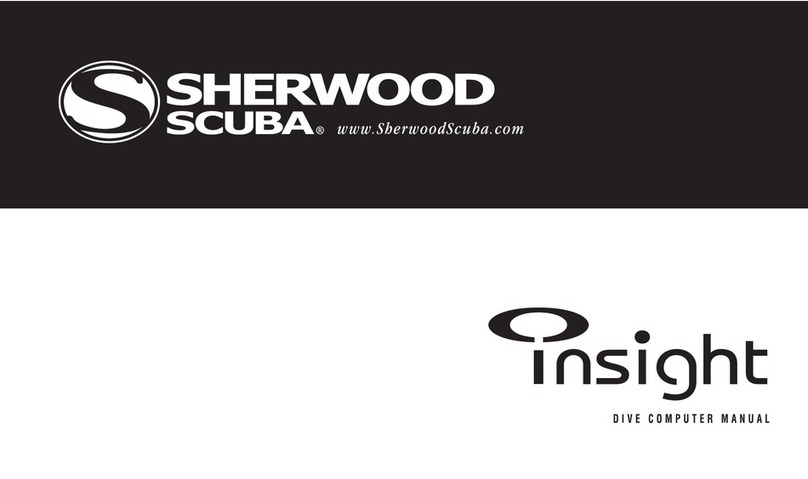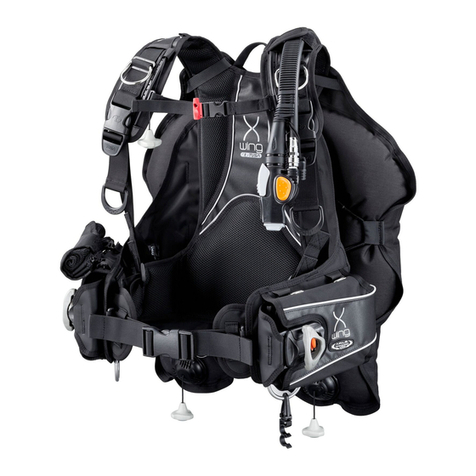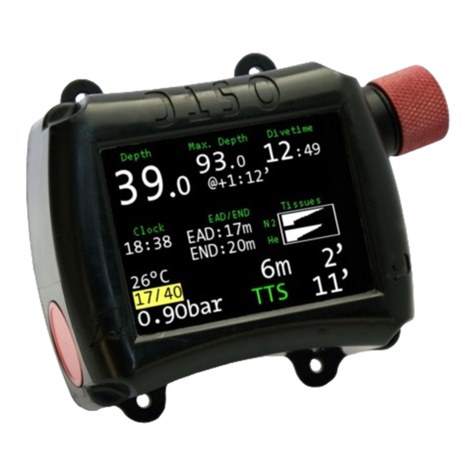GB
Contents MSA
4AirGo
3.3.1.1.Preparing the Apparatus for Use with Two Compressed Air
Cylinders....................................................................................... 31
3.3.1.2.Connecting Two Compressed Air Cylinders ................................. 31
3.3.2.Pressure Reducer with alphaCLICK 2 ............................................. 32
3.4.Donning the Compressed Air Breathing Apparatus.................................. 33
3.5.Condensed Check Prior to Use................................................................ 33
3.6.Donning the Full Face Mask..................................................................... 34
3.7.During Use ............................................................................................... 34
3.8.Use of Additional Connections for Medium Pressure ............................... 35
3.9.Handling the Warning Device................................................................... 35
3.10.Filling with Quick-Fill ................................................................................ 36
3.11.Removing the Compressed Air Breathing Apparatus ............................... 36
3.12.Removing the Compressed Air Cylinders................................................. 37
3.12.1.Pressure Reducer with Thread Connection ..................................... 37
3.12.2.Pressure Reducer with alphaCLICK 2 ............................................. 37
4.Maintenance and Care ......................................................................................39
4.1.Maintenance Instructions ......................................................................... 39
4.2.Maintenance Intervals .............................................................................. 40
4.3.Cleaning................................................................................................... 41
4.3.1.Pre-cleaning..................................................................................... 41
4.3.2.Cleaning, Light Soiling ..................................................................... 41
4.3.3.Cleaning, Heavy Soiling................................................................... 41
4.3.4.Removing the Swivelling Plate......................................................... 43
4.3.5.Cleaning and disinfection of AutoMaXX on Fix pneumatics............. 44
4.4.Changing the Straps and Belt .................................................................. 47
4.4.1.Changing the Shoulder Straps......................................................... 47
4.4.2.Changing the Protection Tunnel ...................................................... 48
4.4.3.Changing the Holder for Mask/Helmet Combination........................ 49
4.4.4.Removing the Rescue Grip.............................................................. 49
4.4.5.Changing the Hip Belt...................................................................... 50
4.4.5.1.Options MaX, eXX and pro with Swivelling Plate .......................... 50
4.4.5.2.Option pro without Swivelling Plate............................................... 51
4.4.5.3.Options com and mix .................................................................... 51
4.4.6.Changing the Cylinder Strap............................................................ 52
4.4.6.1.Long Cylinder Strap ...................................................................... 52
4.4.6.2.Short Cylinder Strap...................................................................... 53
4.4.6.3.alphaBELT und alphaFP............................................................... 53
4.5.Visual, Function and Tightness Check ..................................................... 54
4.6.Checking the Warning Device .................................................................. 54
4.7.Checking the High Pressure Gaskets ...................................................... 54
4.8.Changing the Battery alphaMITTER / alphaSCOUT / ICU....................... 54
4.9.Overhaul................................................................................................... 55
